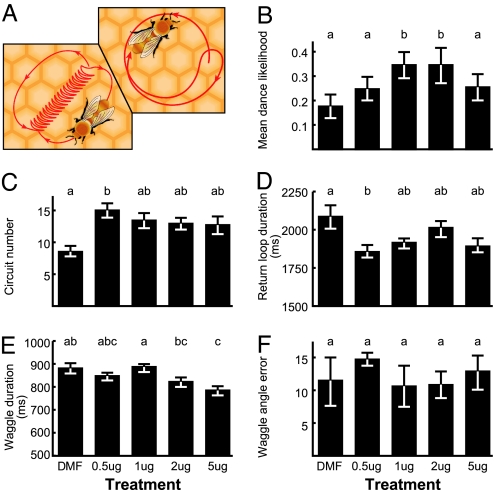Fig. 1.
Effect of OA on honey bee waggle dances. (A) Schematic of round and waggle dances. In waggle dances, the duration of the waggle phase corresponds to the distance to a resource. The angle of the waggle phase of a dance relative to vertical corresponds to the angle between the food source and the sun on departure from the hive. A single waggle phase and return loop is one dance circuit. In round dances, the dancer runs in a tight loop reversing direction at the end of each circuit. (B–F) Effect of topical OA treatment on different elements of the waggle dance (Experiment 2). Bees were treated topically with one of four different doses of OA or dimethylformamide (DMF) as a control. More than 20 bees were analyzed per group. Bars present mean values ± SE. Superscripts refer to nonparametric statistical analyses. Columns marked by different superscripts differ at the 5% confidence level. (B) Dance likelihood: mean and S.E. calculated from arcsin transformed values; groups that differ statistically from DMF are marked by different superscripts (Mann–Whitney tests with Bonferroni correction). (C–F) Differences between treatment groups were tested with Kruskal–Wallis tests, and comparisons between specific groups were made with Dunn's post hoc tests.

